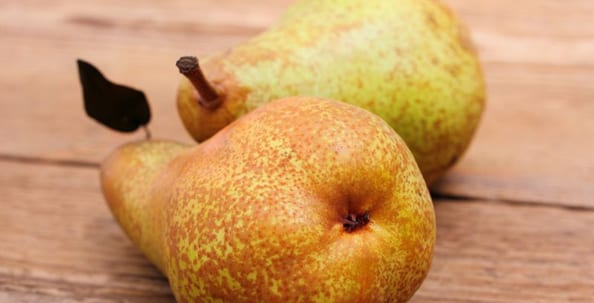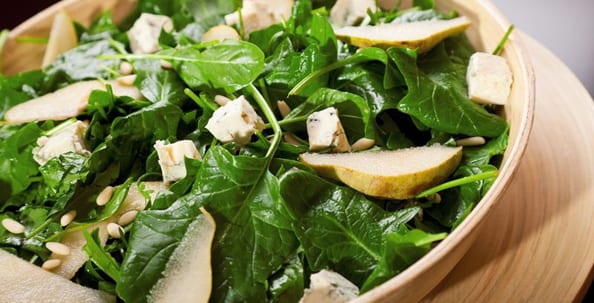You won’t be surprised to hear that pears are one of the best-selling fruits. Read on to discover the names of a few of our favourite types, how nutritious they are, and why you sometimes find them in bottles.
Pear season is a lengthy affair – it begins in summer and goes on through to January (according to the variety), and so we have summer, autumn and winter pears. A further distinction is made between dessert pears, which are perfect for eating just as they are, and cooking/cider pears. Pear varieties are known by a myriad of intriguing names. For instance, the Abate Fetel is the most popular type of dessert pear in Germany, Liebherr’s homeland, as well as several other European countries. The Abate Fetel is an elongated pear, known for its rich sweet and aromatic flavour, and characterised by its curvaceous bottle-shape and its juicy, yellowy-white flesh.
In the UK, the Beth pear would be a good choice for early season; mid-season would be the Concorde variety, and then Winter Nelis for a late season option.

People enjoy eating pears in many ways: with muesli, in a fruit salad, or as a topping for various cakes or tortes, just to name a few.
Perhaps you have heard of one of the most famous pear desserts, named after the Helene pear: Poires Belle Helene? It’s a classic French recipe for poached pears with chocolate sauce and vanilla ice cream, and it can be as sophisticated as you want to make it. But don’t be tempted to think of pears only in terms of sweet dishes; they also work wonderfully with savouries such as strong cheese and salads. One particularly tasty way to enjoy pears is in a spinach salad with blue cheese. We have put together a recipe for you – why not try it out?
Spinach salad with pears and blue cheese

Ingredients:
4 cups of spinach leaves, washed and torn into small pieces
2 pears, cored and cut into wedges
2 tbsp balsamic vinegar
3 tbsp olive oil
3 tbsp orange juice
Salt to taste
1 garlic clove
4 tbsp blue cheese, crumbled
4 tbsp walnuts, chopped and toasted
Method:
First, mix together the balsamic vinegar, olive oil, orange juice, crushed garlic and salt to create a dressing. Add the washed spinach and carefully toss together. Place the pear wedges on top of the salad, then sprinkle on the cheese and chopped nuts. Serve with plenty of fresh French bread. Bon appétit!
Sugary sweet and low in fat
Admittedly, there are fruits that have fewer calories than pears but, with barely 0.5 g fat per 100 g, you really can’t go wrong with them! What’s more, pears contain their fair share of vitamins and minerals with plenty of fibre to boot; they are also easy to digest and very gentle on the stomach because they have low acidity (they are less acidic than apples, for example). So, you can enjoy eating pears with a totally clear conscience, knowing you’re doing yourself some good!
Williams Christ pear – in a bottle!
Well, as we’ve already alluded to, pears certainly have a great deal to offer in terms of culinary versatility and enjoy great popularity; but, it’s not only for their sweetness, juiciness and healthiness as a fruit that they are loved… pears also taste amazing when used to flavour a fruit brandy, schnapps or liqueur. Such heart-warming pear beverages are made using Williams Christ pears, and some clever old distillers even manage to get a fully-grown pear inside the bottle to infuse their product with ‘peariness’. How did they manage it? When the pears still hanging from the tree, and still extremely small, bottles are placed over them and attached to the branch. The pears then, more-or-less, grow to full size already in the bottle. When the pears are harvested, the bottles are ‘harvested’ with them, briefly rinsed, and then filled with schnapps, pear perfectly in place!
On a similar but different note, poached pears (often pealed, cored and sliced) can be bottled to preserve them for later enjoyment. However, if you want to enjoy your fresh pears for as long as possible, you will need to store them in a cool place. In a refrigerator, they will stay fresh for up to 26 days and in a Liebherr BioFresh compartment they can be stored for up to 55 days.
What is your favourite variety of pear? How do you like to eat pears – on their own, in a sweet dessert, or as a savoury dish? Please use the comment function below this post or start/join in discussions with us on Facebook.